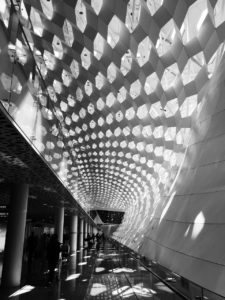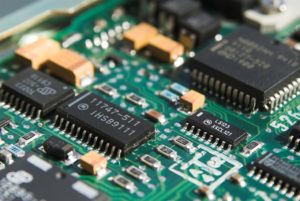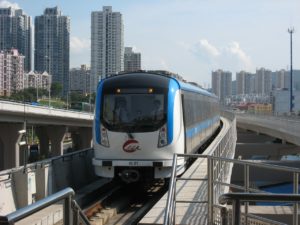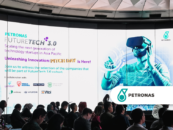After all the excitement from the Shenzhen TechCrunch last week I was reminded of the an article that I wrote earlier this year. Asia is experiencing exciting times.
For the past few decades, Silicon Valley has been the global innovation hub. To think that this will last forever, however, is ludicrous. Just as history has proven, the world’s “center for innovation” cycles from place to place – just as Babylon changed the world, eventually so did Alexandria, then Ancient Greece, and then Berlin. These cities are just some of the places throughout history that have taken form of a “Silicon Valley”. History will repeat the cycle, and sooner than we think.
The next Silicon Valley will be a city much deserving of the title. It will take a special combination of developing skill sets, growth velocity, infrastructure, location, and put plainly, good timing. Some candidates are places like government-backed Singapore, renewable energy leader Munich, intellectually and academically centered Boston, progressive and aggressive Bangalore, and even the high-tech and fast transforming city of Rio de Janeiro. They’ve all shown to be solid candidates for a future epicenter of innovation.
With all these places filled with opportunity, the future of innovation on a global scale seems bright but which candidate will take the title? The answer is Shenzhen, China.

Image via Pixabay
From fishing village to global powerhouse
35 years ago, Shenzhen was just a fishing village across the border from Hong Kong. In 1979, just one year after Deng Xiaoping became China’s paramount leader, he designated the village of Shenzhen as a “special economic zone”. This would be the first test of capitalism as the Chinese economy began to liberalize.
In 1983, the worldwide sales of personal computers grew by 73% and the technological shift began to station itself in Silicon Valley. Meanwhile, in the East, the fishing village of Shenzhen was radically changing its infrastructure. The city grew faster than any other in the history of civilization, as it went from a population of 300,000 to over 10 million in the time of a single generation. Shenzhen quickly became the incubator of technology for China.
Since the transformation, Shenzhen has acted as a round peg in a square hole, forcing China to think differently. Simply put, the manufacturers make new products, introduces new business models and consistently remains on the cutting-edge of technology. Shenzhen got its economic start by manufacturing products for foreign companies but quickly used its knowledge acquired from experience to start building its own economy. The city has grown not only as a manufacturer but as an authority for innovation.
Many of today’s technological leaders prefer to use Shenzhen as their headquarters. Companies such as Huawei, Tencent, BGI, and ZTE call Shenzhen home. As the city moves to shake its manufacturer label and become an innovator in its own right, it transitions from old to new at an astonishing rate.
People make the difference
The city is in the middle of an upgrade from manufacturing hub to global groundbreaker. With the support from the government, Shenzhen is set to transform rapidly.
According to Shenzhen’s current mayor, Xu Qin, more than 17,000 Shenzhen manufacturers have shut down in the past five years primarily due to the city’s plan for an upgrade. Xu also confirmed that Shenzhen will become a “global innovative center” as the city shifts investments from manufacturing to research and development in the technology sector.
Xu’s goal is to attract more high-end global-based business. Leveraging the city’s entire ecosystem is key. However, it is the people that will ultimately make the difference.
The people of Shenzhen are different from traditional innovators. Many of the existing electrical engineers in Shenzhen are performing well above of their international peers, but without any formal training.They never went to school because they never had to. They were raised building logic boards using spare parts from factories.
The gap of academic knowledge for most of this community actually plays to their advantage. Skills have been adopted primarily through real experience, something the traditional schooling system fails to offer. The existing environment breeds creativity and efficiency which are prime advantages when designing and developing new products and business models.
Open source, open innovation

Image via Pixabay
Besides the advantage of experience, Shenzhen has another huge edge over its competitors: its ability to open source. Evolved from its manufacturing background, the city has learned to share technology, creativity, and innovation all in the spirit of creating efficiency. The open-source model has proven to work wonders for a number of companies.
Some argue that open-source is the reason why Shenzhen is beginning to lead the world in selective industries, with virtual reality as one of the best examples.
Minal Hasan, of Silicon Valley venture capital firm K2 Global, said, “I think China will adopt VR way faster than the U.S. because of how the country is structured, and how involved the government is.”
Shenzhen is leading China, an $86 million domestic market, in VR development. Some may argue that VR is the highest potential market in today’s world economy. Judging by the existing infrastructure inclination, Shenzhen will take ownership of the market and Silicon Valley will trail in a distant second.
Industry leading companies are also validating the worth of an open-source model. Elon Musk, like Shenzhen, understands the value of leveraging open-source to drive innovation. In June 2014, he announced that Tesla was removing all patents in the spirit of open-source and “for the advancement electric vehicle technology.” Musk’s goal is to advance an industry as an existing leader, not to slowly beat down smaller, less resourceful competitors through patent battles
Musk isn’t the only one in the valley that’s leveraging the model. Microsoft recently joined the Linux Foundation as a Platinum Member to leverage the open-source operating system and build products beyond previously untouchable limits. Google, a leader in software and web search, has opened its Scholar platform to allow anyone to contribute to scholarly journals, as well as many other resources in their ecosystem. The open-source model has also been adopted by rising entrepreneurs and pioneered by crowdfunding with platforms like Indiegogo, Kickstarter, and Bountysource.
Imagine the difference it makes when not just a single company, but an entire city adopts an open-source model. Shenzhen is not only dipping its toes; they have been growing with this model deep within their bloodstream. This will be a determiner for the transformation from Silicon Valley to Shenzhen as the leading city for innovation.
Silicon Valley is slowing down

Image via Pixabay
The Western world, in contrast, has traditionally been known to try to control the economy and create high barriers to entry. Silicon Valley is the perfect example. The start-up environment in Silicon Valley resembles one of a fraternity.
As an entrepreneur, maybe you can bootstrap your idea and hustle your way with a small team to an office conveniently located next to a food truck in Soma. Although, in order to scale enough to make a dent in the market, getting funded to gain broader resources is often necessary.
The group of venture capitalists in Silicon Valley is small, tightly-knit, and has a very exclusive selection process. With the existing system in Silicon Valley, the investors are the ones who have control of how technology is developed, applied, and distributed to the general public. It’s an underlying, silently controlled economy.
In parallel, companies like Apple and Samsung are constantly in legal battles over who patented rounded rectangles and 4.7” screens. For many companies, the business model and contributed value are strictly generated from patenting. Unfortunately, this causes many Silicon Valley companies to allocate heavy spending for lawyer fees and court battles – a huge distraction from the importance of innovation.
Factors for a paradigm shift
In order for Shenzhen to make the most of this opportunity, there are two vital factors:
- Shenzhen must never forget that consumers love quality, design, and purpose of products. The city will need to shed much of its manufacturing mindset and begin recognizing itself as a leader in design and as a global innovator. With this mindset and stereotypical shift, Shenzhen can become the new powerhouse of innovation and the technological world.
- Silicon Valley must fail to demilitarize the traditional model of the Western intellectual property and a patent-packed ecosystem. Silicon Valley’s current infrastructure and value model were built for traditional innovation. It will be very difficult for the community to completely transition to the new, open-source structure. This is good news for Shenzhen.
Filled with experience, history, and dedicated drive, Shenzhen is on the verge of achieving greatness. The city has the chance to become the next epicenter of innovation. 2017 will be an important year to prove itself.
No matter where the next Silicon Valley is, it will be an upgrade. The new norm is a flexible ecosystem of exponential ideas and open-source innovation and Shenzhen has an incredible head start.
This article first appeared on Linkedin
Featured image via Pixabay









